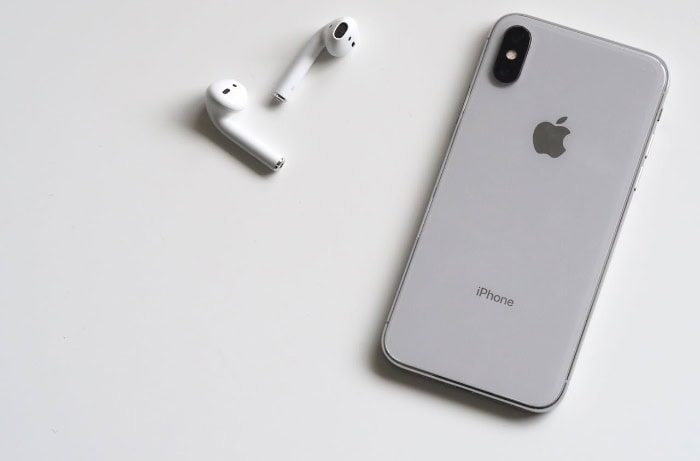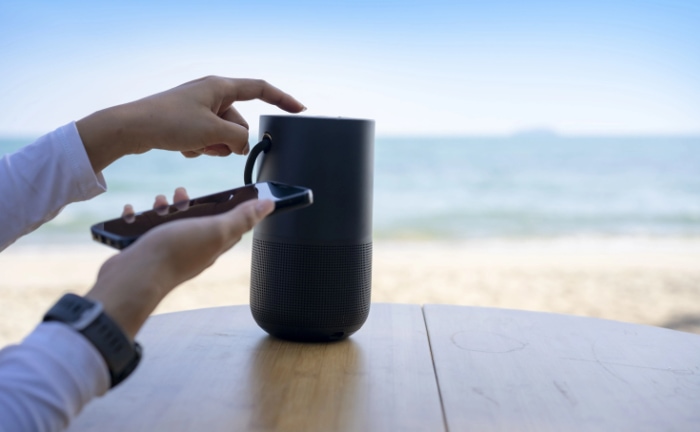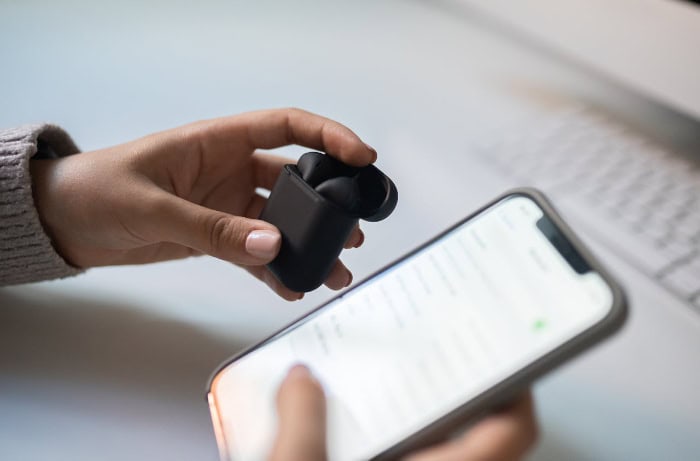Bluetooth 5.0 vs. 5.3: Which Version is Right for You?

Buying new tech often feels like a gamble when confusing specifications are involved. You see “Bluetooth 5.3” plastered on the latest earbuds and naturally wonder if your older Bluetooth 5.0 smartphone is holding you back.
It is easy to assume a higher version number automatically means faster speeds or massive range improvements. That is rarely the case here. The actual leap from 5.0 to 5.3 focuses almost entirely on efficiency and stability rather than raw power.
The Big Three Performance Differences
While the version number jump might seem small on paper, the practical changes between Bluetooth 5.0 and 5.3 dramatically alter the user experience. These improvements focus less on raw range and more on how intelligently the devices communicate with each other.
The upgrades target three specific areas that dictate daily usability: how fast the audio syncs, how efficiently the battery drains, and how reliably the connection holds up in difficult environments.
Latency and Responsiveness
Audio lag is often the most noticeable annoyance with wireless audio. If you have ever watched a video where the dialogue happens a fraction of a second after the actor's lips move, you have experienced high latency.
Bluetooth 5.0 manages standard audio transmission well enough for music, but it often struggles to keep up with the rapid-fire demands of gaming or high-definition video syncing. The older standard simply takes too long to process the data stream.
Bluetooth 5.3 tackles this delay through a feature known as Connection Subrating. This technology allows a device to switch between low-power states and high-performance states much faster than before.
In previous versions, a device in “sleep” mode took a perceptible amount of time to wake up and start receiving heavy data loads. With subrating, the transition is practically instant.
The earbuds can sit in a battery-saving idle mode and immediately snap into a high-performance active mode the moment you start a game or video. The result is a responsive experience where the sound matches the action on the screen almost perfectly.
Battery Efficiency
Power consumption has been a priority since Bluetooth 5.0 introduced Low Energy (LE) protocols for data transfer. That update was significant, but 5.3 refines the technology to squeeze even more life out of small batteries.
The standout improvement here is LE Power Control. This feature allows devices to dynamically optimize their signal strength based on proximity.
Devices running on 5.3 constantly monitor the signal quality between the source and the receiver. If your phone is in your pocket and your earbuds are in your ears, the connection is strong and requires very little power.
The system recognizes this and instructs the hardware to lower its transmission power to the absolute minimum required to maintain the link. It stops the device from “shouting” when a “whisper” will do.
For users with wearables like smartwatches or fitness trackers that run 24/7, this efficiency prevents wasted energy and can extend battery life by days compared to older 5.0 counterparts.
Connection Stability
Interference is the primary cause of stuttering audio and dropped calls. Wireless signals are everywhere, especially in crowded locations like gyms, airports, or busy offices.
In these environments, dozens of devices compete for space on the same frequency bands. Bluetooth 5.0 often struggles here because it blindly attempts to transmit data, sometimes clashing with other signals.
Bluetooth 5.3 solves this congestion problem with improved Channel Classification. You can think of this as a real-time traffic navigation system for wireless data.
The transmitting device actively scans the available frequency channels to identify which ones are clogged with interference and which ones are clear. It creates a map of these channels and avoids the bad ones entirely.
Instead of forcing data through a congested frequency, the system automatically hops to a clear lane. This proactive approach ensures that your music keeps playing smoothly even when you are surrounded by hundreds of other active devices.
Exclusive Features in Bluetooth 5.3

Performance improvements usually just make existing tasks faster or smoother, but Bluetooth 5.3 introduces capabilities that older devices physically cannot support. These additions fundamentally change how audio is transmitted and shared.
While a software update can sometimes improve connection stability on older phones, the features listed below require specific hardware architecture found only in the newer generation of chips.
LE Audio and the LC3 Codec
For years, Bluetooth relied on the SBC codec to transmit sound. It was functional but inefficient, often compressing audio to the point where quality suffered noticeably.
Bluetooth 5.3 adopts the Low Complexity Communication Codec, or LC3, as the new standard for audio transmission. The primary advantage of LC3 is its ability to deliver higher audio quality at much lower bitrates.
It compresses sound more intelligently than its predecessor, allowing rich, detailed audio to travel over the airwaves using significantly less data.
Data efficiency directly translates to energy efficiency. Because the earbuds receive high-quality audio with less data throughput, the radio stays active for shorter periods.
The hardware can maintain excellent sound quality without draining the battery as quickly as older models. Bluetooth 5.0 devices rely on the older “Classic” radio for audio streaming, which is far more power-hungry.
They simply lack the architecture to utilize the LE Audio framework, meaning no amount of firmware tweaking will allow a 5.0 headset to use the LC3 codec.
Auracast and Broadcast Audio
Bluetooth has traditionally been a solitary experience, linking one source to one receiver. Auracast completely dismantles this one-to-one limitation by introducing broadcast audio.
This feature allows a single transmitter, such as a smartphone, television, or public address system, to send audio to an unlimited number of receivers simultaneously. It effectively turns Bluetooth into a localized radio station.
The real-world applications for this are vast. You could sit in a sports bar and tune your earbuds into the audio of a silent TV on the wall, or walk through an airport and have gate announcements streamed directly into your hearing aids or headphones.
On a personal level, it allows you to share a song or video with friends by letting them “tune in” to your phone's stream with their own headsets. This capability is strictly tied to the hardware advancements made in the Bluetooth 5.2 and 5.3 era.
Older devices can neither broadcast these signals nor detect them, leaving 5.0 users unable to participate in this shared audio environment.
The Backward Compatibility Trap
One of the most misunderstood aspects of Bluetooth technology is how different generations interact with one another. Consumers frequently purchase the newest noise-canceling earbuds boasting 5.3 specifications only to pair them with a smartphone they bought three or four years ago.
While the connection will be successful, the performance rarely matches the marketing claims listed on the box.
The Lowest Common Denominator Rule
Bluetooth connections operate on a strict negotiation basis that follows a simple “lowest common denominator” rule. When two devices pair, they handshake and immediately communicate their respective capabilities.
If your new headphones support the advanced energy-saving features of version 5.3 but your laptop is limited to version 5.0, the headphones automatically disable those newer features to match the laptop. The entire connection defaults to the capabilities of the oldest device in the chain.
The consequences of this rule are often overlooked by buyers. You essentially lose every specific advantage discussed in the previous sections.
The high-efficiency LE Audio and the LC3 codec will not activate because the older source device does not know how to encode them. The rapid switching provided by Connection Subrating is disabled, meaning latency returns to standard levels.
Even the advanced power control features remain dormant. Your expensive new peripherals will function, but they will effectively mimic the performance of older technology until you upgrade the source device as well.
When It Still Works Fine
Losing access to top-tier features does not mean the device is broken or useless. Backward compatibility ensures that the core experience remains completely intact and reliable.
The device will not fail to pair, nor will it refuse to play audio. You can still stream your playlists, take hands-free calls, and control volume without any technical hiccups. The data transfer just happens over the older, slightly less efficient protocols.
For the vast majority of users, this standard connection is perfectly adequate. If your primary goal is listening to podcasts on the bus or taking phone calls at your desk, the lack of “Pro” features like ultra-low latency or broadcast audio will likely go unnoticed.
The fundamental utility of the product is preserved, allowing you to use your new gear comfortably while waiting for your phone or computer upgrade cycle to catch up.
Real-World Scenarios: Who Actually Needs 5.3?

Technical specifications only tell half the story. The raw data concerning bitrate and signal strength is meaningless until you apply it to your specific daily routine.
Upgrading to Bluetooth 5.3 is not a universal requirement for every user. For some, the difference will be transformative, solving persistent annoyances with lag and connection drops.
For others, the experience will remain virtually identical to what they already have.
The Gamer and Video Watcher
For anyone who plays competitive mobile games or watches a lot of video content, latency is the enemy. Older Bluetooth standards often introduce a slight but perceptible delay between the visual action on the screen and the sound reaching your ears.
In a fast-paced shooter or rhythm game, that fraction of a second can be the difference between winning and losing. Even for non-gamers, watching a movie where the dialogue is slightly out of sync with the actor's lips is a frustrating experience that breaks immersion.
Bluetooth 5.3 is a necessary upgrade for this demographic. The rapid switching capabilities and improved efficiency dramatically tighten the synchronization between video and audio.
It ensures that the sound of a footstep or a gunshot happens exactly when you see it. If your primary use for headphones involves a screen, the reduced lag provided by the newer standard eliminates the “drift” that plagues older devices.
The Commuter and Gym Goer
Environments like crowded subway cars, busy airports, and packed gyms are nightmares for wireless signals. In these spaces, hundreds of devices (smartphones, smartwatches, and headphones) are all screaming for attention on the same limited frequency bands.
This congestion is usually why music cuts out or stutters when you walk through a security checkpoint or step onto a busy train. The older Bluetooth 5.0 standard often struggles to maintain a clean link amidst this invisible chaos.
The interference resistance found in Bluetooth 5.3 makes it superior for active users who spend time in these signal-heavy zones. The improved channel classification acts like a smart navigation system, constantly steering your connection away from crowded frequencies and onto clear ones.
If you frequently deal with audio dropouts during your commute or workout, moving to 5.3 offers a much more consistent and frustration-free listening experience.
The Casual Listener
There is a large segment of users for whom an upgrade would be a complete waste of money. If you primarily use your headphones to listen to Spotify while working at a desk, or to catch up on podcasts while doing chores at home, Bluetooth 5.0 is more than capable.
In a relatively quiet radio environment with the phone sitting nearby, the connection is stable, and the audio quality is sufficient for standard streaming bitrates.
You simply will not notice the absence of the newer features in this context. The battery life on 5.0 devices is already adequate for a few hours of listening, and the millisecond-level latency improvements are irrelevant for music playback.
If your current equipment works and you do not struggle with interference or battery anxiety, there is no compelling reason to rush out and buy 5.3 gear. The basics of wireless audio were solved years ago, and for casual use, the older standard remains perfectly functional.
Technical Breakdown
While the user-facing features often get the most attention, the engineering updates hidden under the hood are what make Bluetooth 5.3 a superior standard. These technical refinements optimize the fundamental protocols that devices use to talk to one another.
Periodic Advertising Enhancement
Every Bluetooth device waiting to connect sends out advertising packets. These are essentially digital signals that announce the device's presence and readiness to pair.
In older versions of the standard, this process was inefficient because the device would broadcast the exact same data packets repeatedly, regardless of whether the information had changed. It was the digital equivalent of someone shouting the same sentence over and over again in a crowded room.
Bluetooth 5.3 introduces Periodic Advertising Enhancement to solve this redundancy. This feature allows the receiving device to ignore duplicate packets if the data has not been updated.
The transmitting device effectively signals that the information remains static, allowing the receiver to skip the processing required for those specific intervals. By filtering out redundant data at the protocol level, the system reduces the workload on the receiving radio.
This keeps the airwaves clearer for actual data transmission and conserves battery life for the receiving device, as it spends less time decoding identical messages.
Encryption Key Size Control
Establishing a secure connection involves a complex negotiation process where two devices agree on a lock-and-key method to protect the data. In the past, the Bluetooth controller, the chip managing the radio, would often accept a connection with a short, weak encryption key, only for the main host processor to reject it later because it did not meet security standards.
This back-and-forth communication wasted time and processing cycles, delaying the actual start of data transfer.
The Encryption Key Size Control update streamlines this security handshake. It allows the host device to define the minimum acceptable key length immediately, preventing the controller from ever negotiating a weak connection.
By setting these ground rules upfront, the system avoids the need to establish and then abruptly drop connections that are not secure enough. This results in a snappier pairing process where the devices agree on security parameters instantly, allowing them to move straight to streaming audio or transferring files without administrative lag.
Conclusion
Bluetooth 5.3 represents a calculated step forward rather than a complete reinvention of wireless audio. It takes the solid foundation laid by version 5.0 and tightens the bolts, focusing on efficiency and reliability instead of flashy new tricks.
For the average user, the transition will feel seamless rather than dramatic. The technology has matured to a point where the goal is no longer just establishing a connection, but maintaining that connection invisibly and effortlessly.
While the new standard is technically superior, it is not an emergency requirement for everyone.
To help you make the final call, consider these simple criteria:
- Upgrade if: You rely on your devices for competitive gaming where every millisecond of lag matters. It is also the right move if you spend hours in congested areas like subways or airports where your current signal often cuts out, or if you simply need your wearable batteries to last as long as possible between charges.
- Wait if: Your current Bluetooth 5.0 headphones are still functioning well. If your main activity is listening to music or podcasts in the comfort of your home or office, the improvements offered by the new standard will be practically invisible to you. There is no need to replace working hardware just to chase a slightly higher version number.


